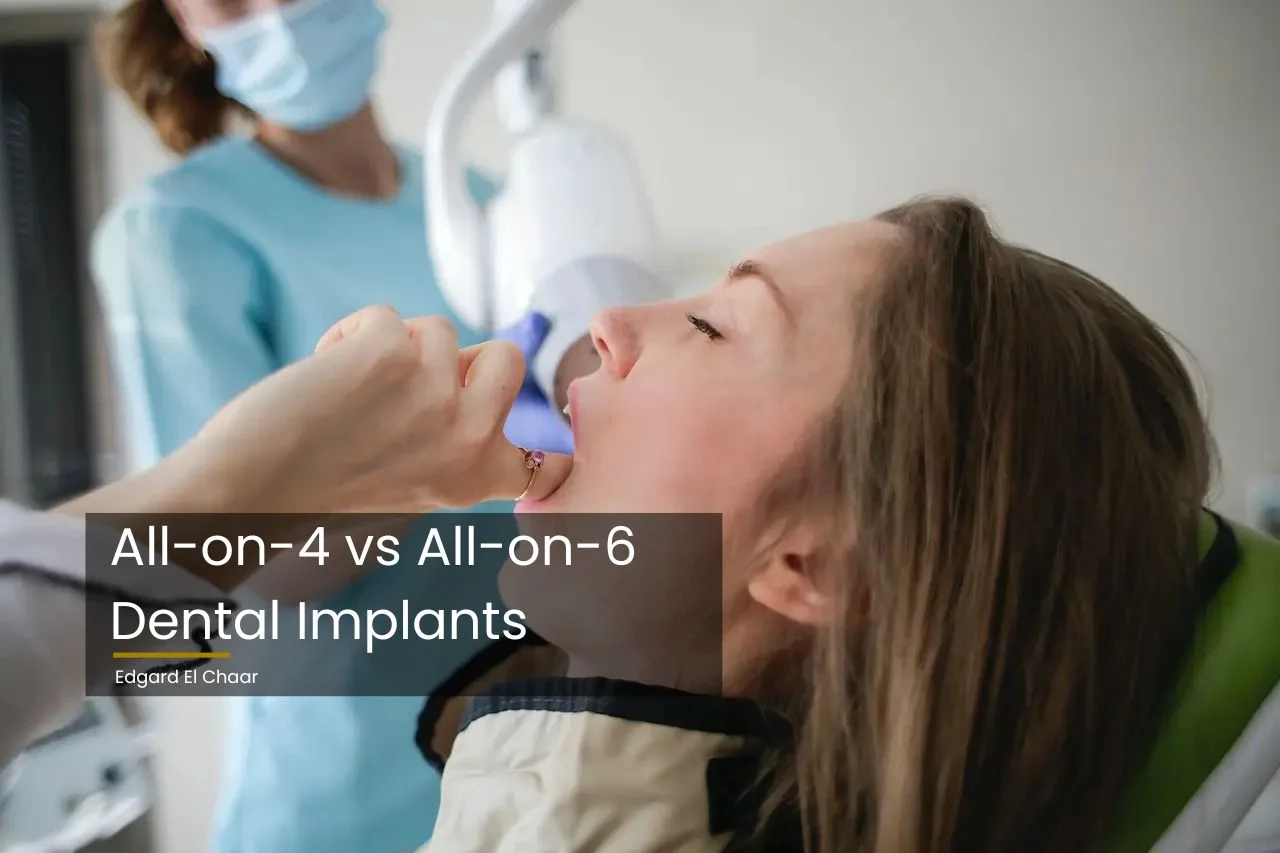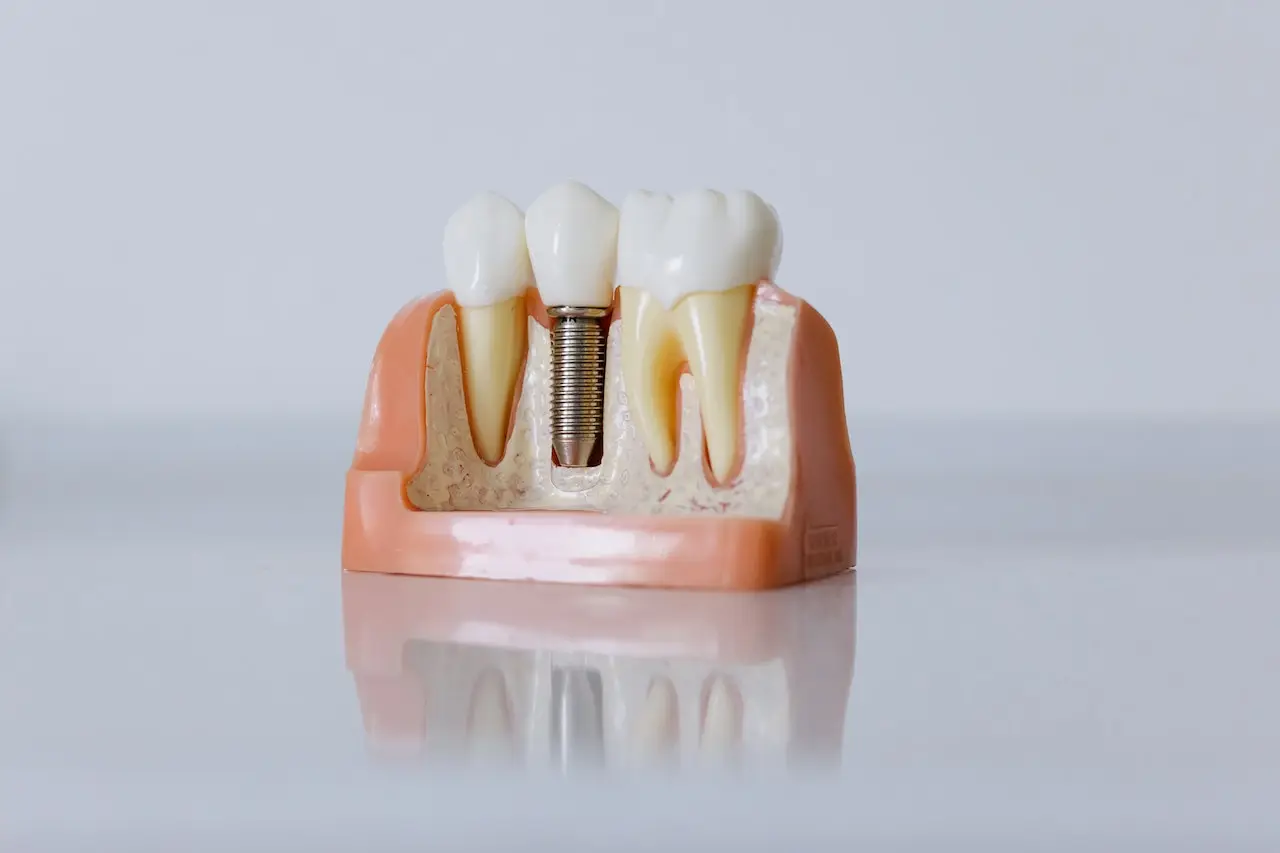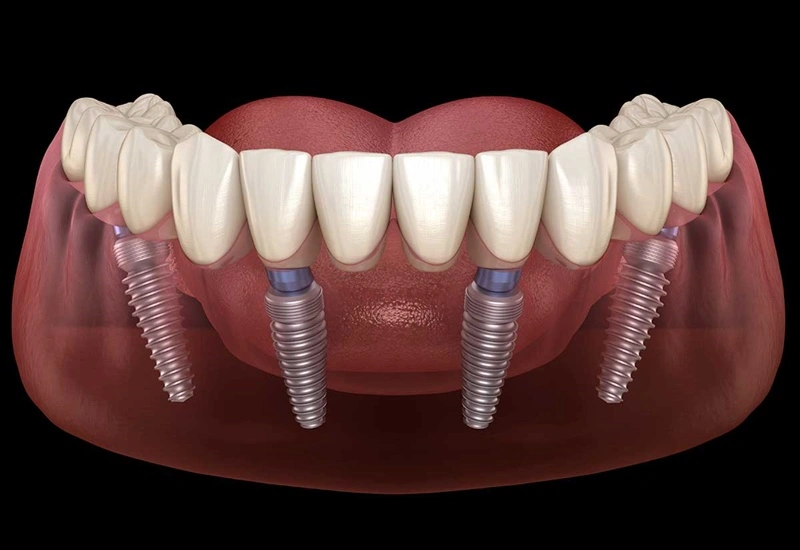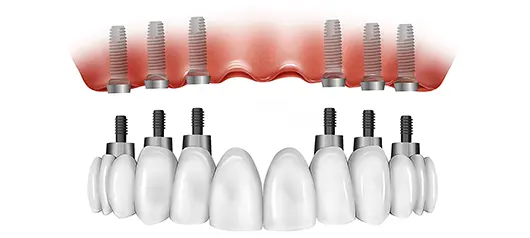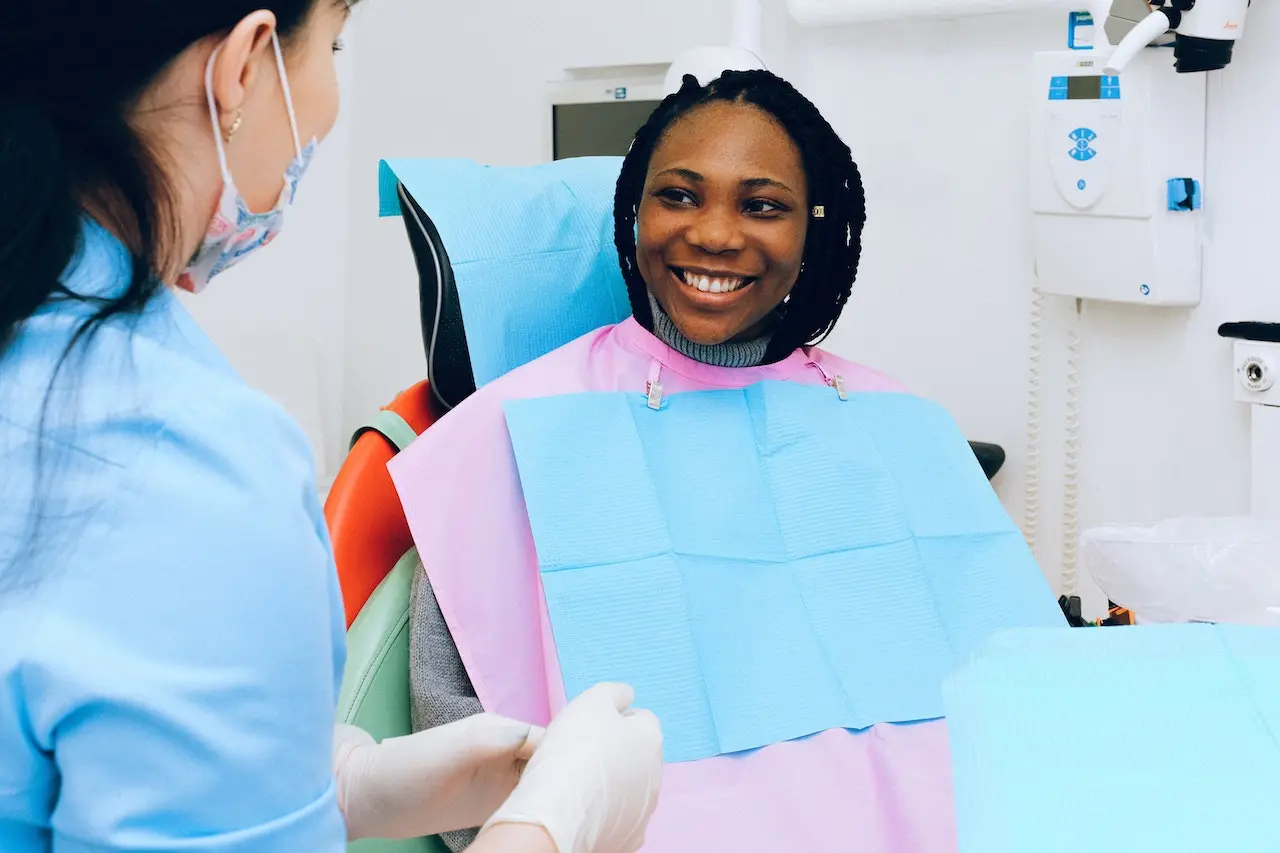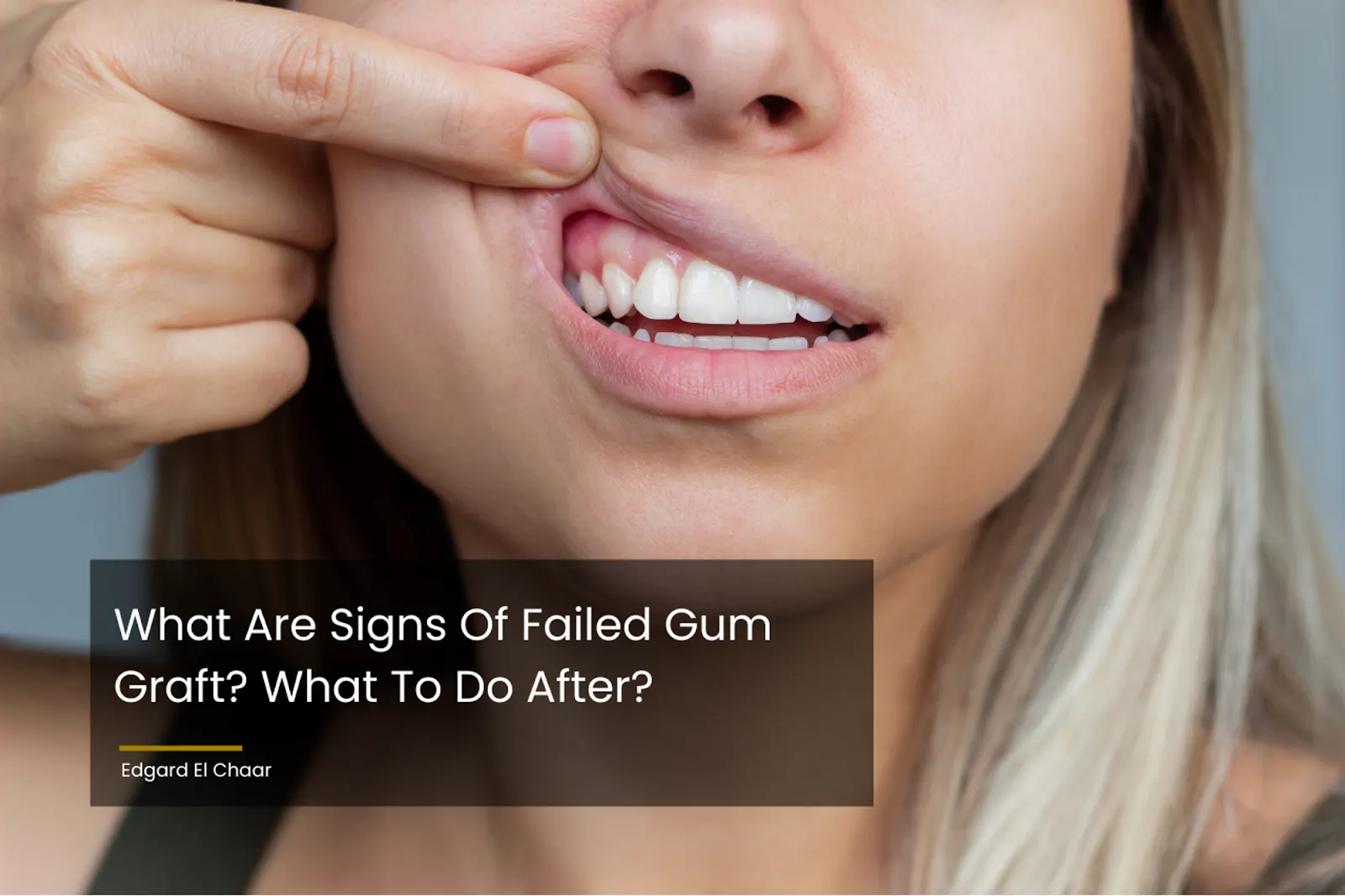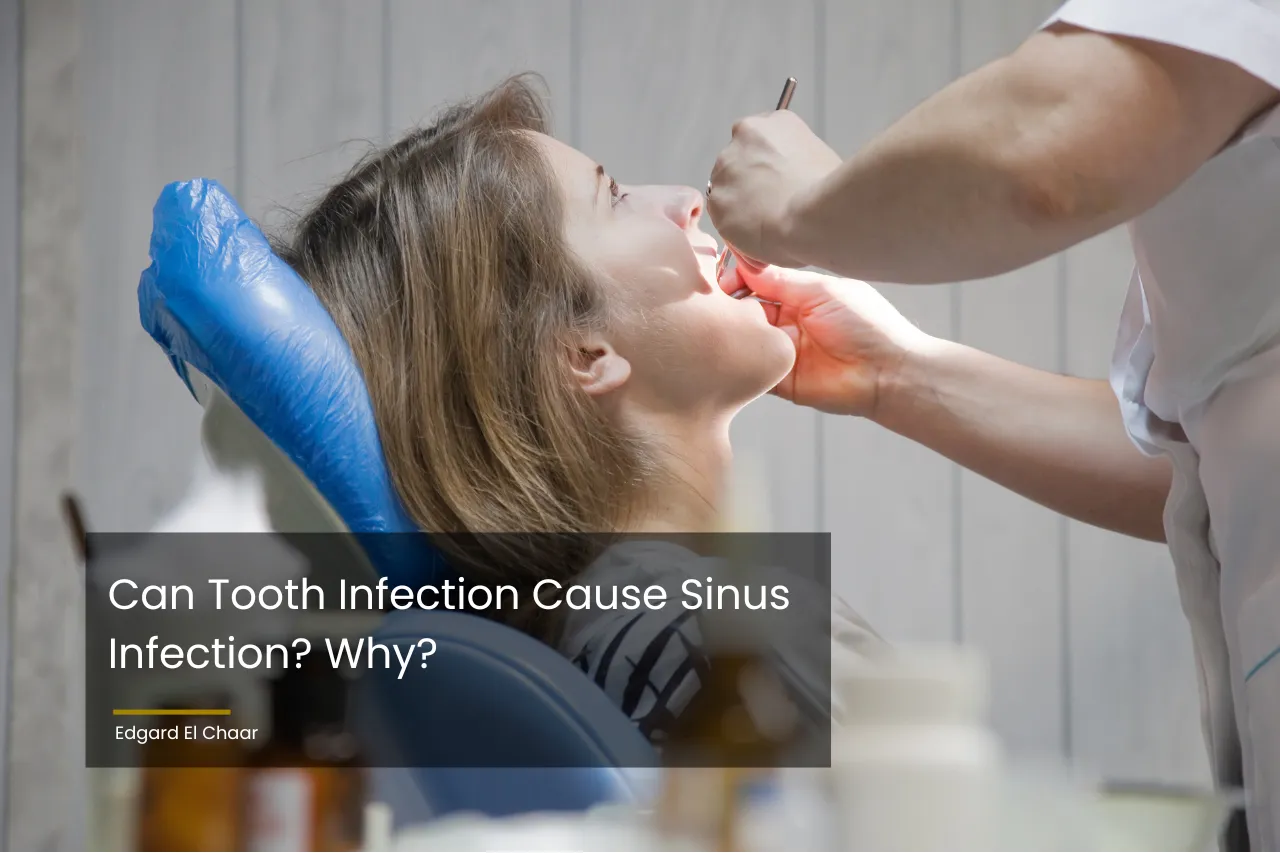All-on-4 vs All-on-6 Dental Implants. Which is Better?
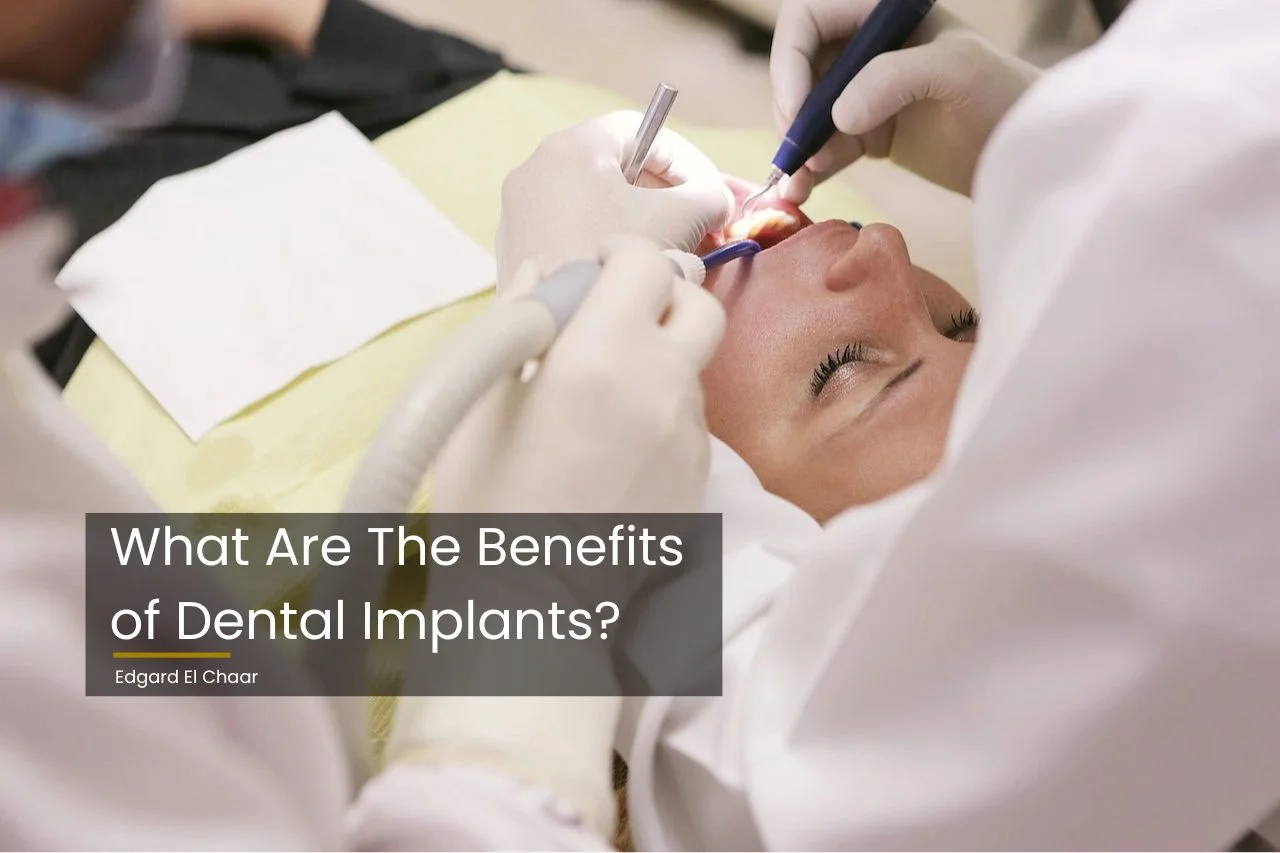
What Are The Benefits of Dental Implants?
02/07/2023
What are the Dangers of Dental Implants? How to Prevent?
02/09/2023Dental implants are an effective and frequently utilized procedure for replacing lost or extracted teeth. Two new implants have revolutionized dentistry, offering great solutions for those looking to replace a full arch of teeth, these are the All-On-4 VS All-On-6 dental implants. Both of these offer unique advantages to the patient depending on their needs.
Deciding which dental implant is right for you can be overwhelming, so we’ll provide some information to make your decision a little easier. In this article, we will explore these two groundbreaking procedures side by side and highlight their differences so you can make an informed decision on which is right for you.
We understand that these decisions can be potentially complicated and emotionally taxing, so we strive to make this process as stress-free and transparent as possible. Contact one of our knowledgeable personnel now and get all of the necessary information you need to determine which dental implants are right for you!
What Does All-On-4 Mean?
The term All-on-4 refers to “all” teeth being sustained “on four” dental implants. All-on-4 dental implants offer an innovative solution to replacing large gaps or entire rows of missing teeth.
This procedure employs 4 strategically placed implant screws that support a full arch of replacement teeth. These permanent teeth are not only customizable but also look and function far better than traditional dentures while also looking and feeling more natural.
Unlike removable teeth, All-on-4 dental implants create a more secure foundation for biting, speaking, and smiling with confidence. A qualified dentist can discuss various options for creating a beautiful, fully functional smile using this exciting new technology.
What Does All-on-6 Mean?
Similar to All-On-4, All-On-6 dental implant is a procedure in which six implants are placed in the upper or lower jawbone to anchor prosthetic teeth in place permanently. This is an alternative to the All-On-4 procedure, which uses only four implants.
The All-On-6 dental implant is a more secure option for patients who want a permanent prosthesis. The trace for this is that All-On-6 requires more bone for the extra two implants and therefore is more likely to require bone grafting.
Who Is a Good Candidate for All-on-4 Dental Implants?
The All-on-4 procedure is a dependable solution for those afflicted with significant tooth loss or decay, and for individuals who have experienced bone degradation in the jaw area making them ineligible for conventional dental implants.
This innovative method utilizes dense bones remaining at front of the jaws to place two posterior implants on an angle that avoids sinus cavities in the upper jaw and nerve canal below; thus eliminating the need for traditional bone grafts.
=> If you’re worried about dental implant dangers, check this out.
The Cost of All-on-4 vs All-on-6 Dental Implants
When taking cost into consideration, All-On-6 is always likely to be more expensive than All-On-4 due to additional costs associated with the two extra implants used and any necessary bone grafting procedure.
Despite this initial investment, many patients feel that the long-term benefits of this procedure make it well worth the cost. Owing to its greater stability and durability, provided All-On-6 is properly maintained in accordance with professional dental advice and best practices, this type of implantation can provide lasting functionality to those who opt for it.
From a professional perspective, we always recommend that our patients weigh up the overall cost of treatment against the benefits when making any decision about their dental health.
All-on-4 vs All-On-6 Dental Implants Comparison
All-on-4 and All-on6 are both great solutions for replacing missing teeth, but it’s important to understand the distinctions between these two procedures. While both are sure ways to restore a smile with confidence, each has unique benefits that should be weighed carefully when looking into dental care options. Below we have listed some key points to note when deciding between these two treatments.
All-on-4 involves four implants whereas All-on-6 involves six implants: All-on-4 entails the placement of four implants into either your upper or lower jaw while All-on-6 involves six implants placed in the same area. Though both involve the use of titanium screws placed directly into your jawbone, All-on-6 requires two additional screws to further support and secure the bridge dentures. This helps our patients gain more rigidity and assurance knowing that their smile is regulated by an additional level of protection.
All-On-6 have greater stability: All-on-6 dental implants offer extra stability and strength compared to other options, which is important in providing a secure base for the replacement teeth. Despite this advantage, factors like the condition of the patient’s gum, mouth, and jawbone are essential elements to take into consideration prior to making a decision. Since each patient situation is unique, your trusted dentist or dental specialist can determine whether All-on-6 is best suited to achieve your desired results.
All-On-6 is more expensive: Cost-wise, the all-on-6 is more expensive than the all-on-4 due to additional cost factors such as two extra implants and possible bone grafting procedures needed. However, this extra investment pays off in terms of long-term durability and stability, making this procedure well worth the price.
All-On-6 is harder to clean: The All-on-6 treatment is a great option for restoring a full arch of missing teeth, but cleaning around the extra two implants can be challenging compared to the All-on-4. With an additional two contact points, while cleaning, the increased difficulty to access all surfaces properly can be frustrating and may require more frequent trips to the dentist to have them deep cleaned.
When it comes to deciding between All-on-4 and All-on-6, the periodontist will know which case is best for each patient after studying scans and evaluating bone loss, among other things.
Conclusion
In conclusion, All-on-4 and All-on-6 are both effective ways to replace missing teeth, but there are some key differences between the two. All-on-4 implants require fewer bones and are less invasive than All-on-6 implants. However, All-on-6 implants provide more support and stability than All-on-4 implants. Ultimately, the best type of implant for you will depend on your individual needs and preferences. Contact us now and with the help of one of our highly-trained, experienced professionals, you can make the best decision for your individual needs.
- Call Us: 212.685.5133 or 212.772.6900
- Contact Us by Submitting This Contact Form
Source
Afram, A., Makhlouf, A. C., Boulos, P., & Nasr, E. (2021, October 1). Accuracy of Digital Vs Conventional Implant Impressions for an All-on-Four Treatment Concept. Acta Scientific Dental Scienecs, 5(11), 98–106. https://doi.org/10.31080/asds.2021.05.1242
Hammond, A. (2022, December 2). Better care for all. Dental Nursing, 18(12), 600–601. https://doi.org/10.12968/denn.2022.18.12.600
Das, R., Deshpande, M., & Kaushal, R. (2014). One for all: A multipurpose template for implant placement. Journal of Dental Implants, 4(1), 78. https://doi.org/10.4103/0974-6781.131011
